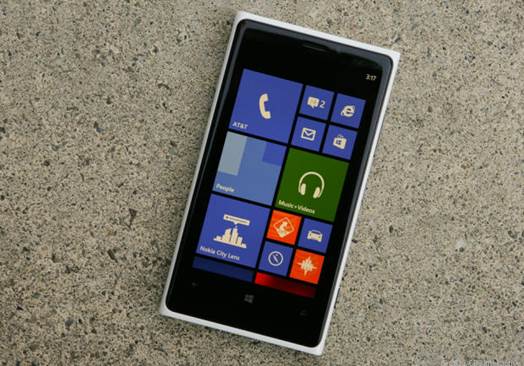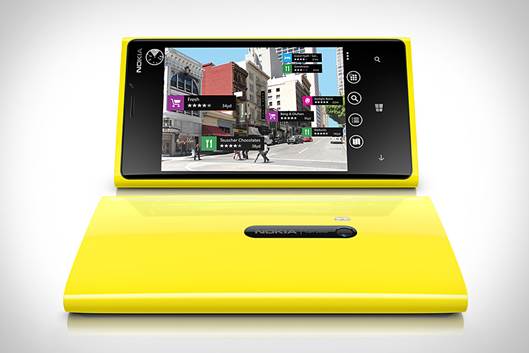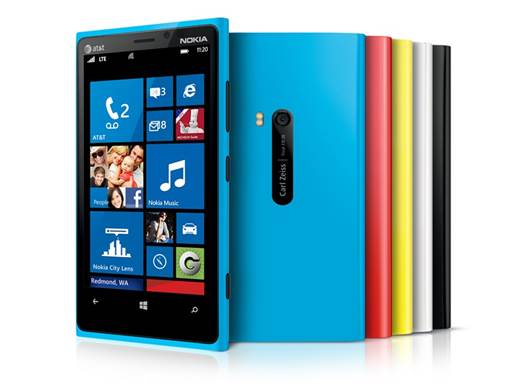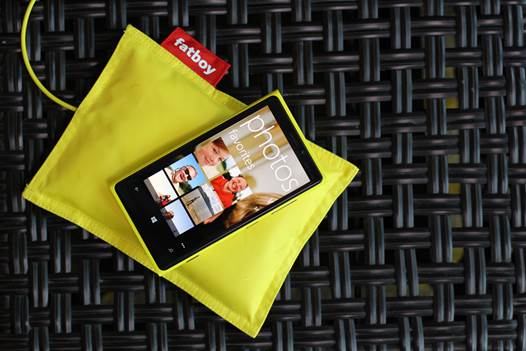Windows 8 phone with some great
features and h weight
One of the first smartphones to use Windows
Phone 8, the Nokia Lumia 920 has some great features, and a hefty weight.
The Nokia Lumia 920 is one of the first
smartphones to use the new Windows Phone 8 operating system (OS). This is the
successor to the older Windows Phone 7 and looks similar to the separate
Windows 8 desktop OS, but that shouldn't necessarily put you off.

One
of the first smartphones to use Windows Phone 8, the Nokia Lumia 920 has some
great features, and a hefty weight
There are plenty of new features in Windows
Phone 8. Live Tiles are no longer just one single, large size and can now be
large, medium or small. This helps prevent the home screen from becoming
unwieldy, but the small size tiles are static and don't show updated
information.
Parents will appreciate Kid's Corner, a
separate account containing apps you've specifically chosen for your children
to use while your own password-protected apps and data remain cordoned off from
their curious fingers. To switch between Kid's Corner and the standard home
screen, go to the lock screen and swipe horizontally. Rooms are a new feature
that allows you to share photos, calendars and notes with selected contacts.
You can have separate Rooms for different groups, such as your colleagues,
friends or family but they also have to use Windows Phone 8 smartphones to get
the most from Rooms. Unless they log in to a special website, users of other
smartphones will only see a small selection of shared content, such as
calendars.
The lock screen can now show data from
apps, such as upcoming Facebook events or new photos from Flickr. Microsoft has
promised tight integration with the Skype internet calling service, but at the
time of writing the promised Skype Windows Phone 8 app has yet to emerge.

The
lock screen can now show data from apps, such as upcoming Facebook events or
new photos from Flickr
Although the selection of apps has grown
since the release of Windows Phone 7, it's still very meager when compared to
the iPhone and Android. Notable omissions include Spotify and Flipboard and
many apps have yet to be updated to take advantage of new Windows Phone 8
features, such as integration with the lock screen.
We're also disappointed that niggling flaws
in the Windows Phone interface have yet to be addressed. The interface is
almost too minimalist for its own good – useful information such as the time
and network signal strength are hidden in most apps, while switching between
open tabs in Internet Explorer takes far too many taps.
Nokia has included some useful apps of its
own with the Lumia 920. The graphics in its Maps app aren't as attractive as
the graphics in Android's Google Maps or in Apple Maps. However, it can
successfully save maps for offline use, which sometimes stumps Google Maps, and
can successfully find directions for routes that would flummox Apple Maps.
Even less impressive were the plug-ins
included for use with the Camera app. For example, the Panorama plug-in for
creating panoramic widescreen landscape photos was fussy to use and created
relatively crude results. Similar panorama features in Sony's Android phones
and Apple iOS 6 worked far better.

The
interface is almost too minimalist for its own good – useful information such
as the time and network signal strength are hidden in most apps
The Nokia Lumia 920 is a flagship Windows
Phone 8 handset for good reason. It's carved out of a single piece of plastic
so it feels robust yet stylish with a soft texture and is available in a
variety of striking colors. However, it's also chunky and heavy. At 185g it's
noticeably heavier than the 112g iPhone 5 and the 133g Samsung Galaxy S3. This
heft, combined with the large width of the 4.5in screen, makes it awkward and
tricky to use the 920 single handed – especially if you have small hands. We
often struggled to stretch our fingers to reach the other side of the screen or
the Back button on the far left hand side of the phone.
There's no doubting the quality of the
screen – it’s bright and sharp. It has a resolution of 1,280 x 720 pixels,
although the large type used in the Windows Phone 8 interface means you
sometimes don't see that much more information onscreen compared to the
substantially lower 800 x 480 resolution of older Windows Phone 7 and Android
handsets. One incredibly clever feature is the ability to use the touchscreen
even when you are wearing gloves.

Recorded
video also looks good with high levels of detail and vivid colors
We were also impressed with the 8.7
megapixel camera. Although it struggles to capture fine details in macro mode,
it's very adept at capturing images in low light. The Lumia 920 captured
surprisingly usable shots with reasonably accurate colors and good levels of
detail in dimly lit rooms and night scenes that would stump other smartphone
cameras. The next best smartphone camera in low light is the iPhone 5. While it
produces photos that are still usable, they are often noisier and not as
detailed.
Recorded video also looks good with high
levels of detail and vivid colors. The camera's image stabilization technology
does an impressively good job at smoothing out shaky video recorded while
running, in a moving vehicle or merely held less than perfectly still. Cleverly
the Lumia 920 can connect to supported speaker docks wirelessly, charging and
playing music without attaching any cables.
The Lumia 920 has some great hardware and
software features, but it's a very big and heavy phone. The continued bareness
of the Windows Phone app marketplace is also worrying – apps add considerable
value to a smartphone and here the Lumia continues to lag behind the iPhone and
Android phones.